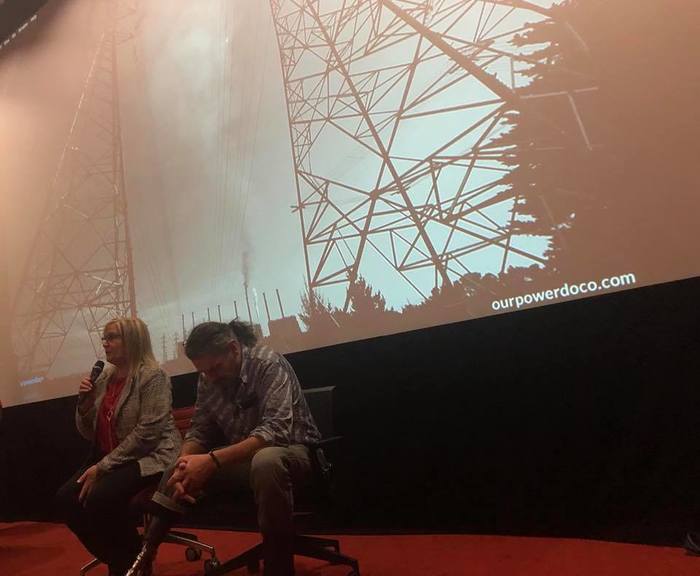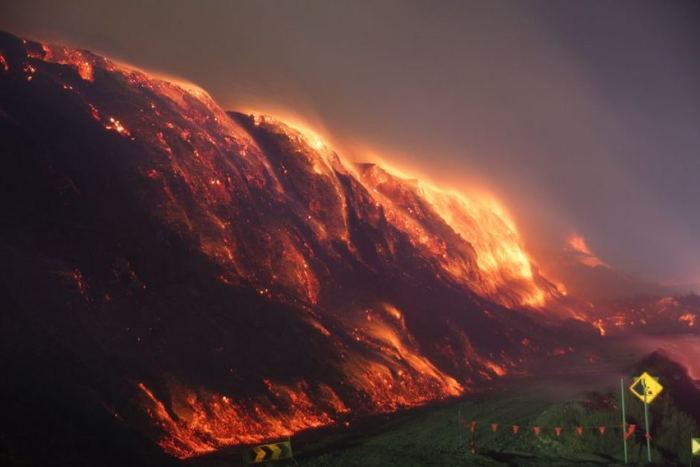Film Review: Our Power
Last night I attended a preview screening of Our Power, a documentary film about Victoria’s Latrobe Valley. The film had already been shown in ‘the Valley’. That it was received there with high acclaim means it scaled its first and perhaps highest hurdle. Locals have become sensitive about how they are represented outside. Understandably so. All too often the Valley has become victim to drive-in-drive-out journalists looking to drum up a sensationalised story about the perils of ice addiction, skyrocketing unemployment or coal miners out of touch with a changing world. The real community vanishes through stories like these which is unfortunate because, in the Latrobe Valley, the community is the story.
In his introduction, director Peter Yacono, was adamant on this point, explaining that Our Power was designed to represent local voices of the Latrobe Valley. The location of yesterday’s screening, in RMIT within Melbourne’s inner ring was also important. It is precisely there and then that these voices need to be heard - within earshot of Victoria’s parliament house, in the lead up to the state election.
Our Power begins, as it must, with the high drama of the 2015 Hazelwood mine fire. The fire that burned for 45 days blanketed the adjacent town of Morwell and the Latrobe Valley in toxic smoke. In the final analysis this smoke officially caused the deaths of between 11 and 24 people from particle inhalation yet it was far greater numbers that suffered from a litany of respiratory-pulmonary issues, some continue to this day. The event received only cursory attention from the media at the time and one wonders how they could resist putting the footage, that Our Power chose to open with, as a repeat breaking news bulletin. This footage is of swarming sparks above a immense cliff-face laced with veiny seams that cut through to a subterranean inferno. As a spectacle it is powerful and a special silence fell over the audience. It was not the quiet of the passively entertained, but pin-drop silence of an audience awestruck.
The 2015 Hazelwood mine fire is not just in Our Power for effect, it represents the most crucial event in the Valley’s history - a catastrophe caused by the culmination of outside decisions, one that has had deep seated consequences into the future.
For those unfamiliar, the Latrobe Valley was settled after the Great War by returning servicemen and their families under the leadership of Sir John Monash. Their objective was to provide reliable power for Victorian homes and industry. As output of and demand for electricity in Victoria increased so did the Valley’s population and workforce. Then in the 90s under the Joan Kirner then Jeff Kennet Goverment Hazelwood power station, together with the Valley’s other power stations and brown coal mines were privatised and sold off. This had a devastating impact on the thriving community. An industry that had 9000 workers before privatisation now employed 2500.
For those that remained on as ‘casuals on call’ they were taught the most valuable lesson of survival - how to remain silent. The film’s accounts describe corporate tactics that are either diabolically ruthless or bureaucratically banal. If a worker had objections they would be “put aside”. To be put aside was to spend all day in an empty room doing absolutely nothing. “You wouldn’t get away with it today,” says Ron Ipsen, former power plant operator.
The cutbacks included selling off assets including the mine’s sprinkler system with its valuable brass fountainheads. It also meant staff responsible for keeping the mine free of flammable growth and those on the lookout for early signs of fire were reduced to a minimum and beyond. All it took was one hot dry day and nearby bush fire.
Our Power conveys the fallout of the fire as only film can. Morwell’s position, beside the lip of the immense Hazelwood coal mine, is established by an aerial shot. Footage is included of town streets blanketed in thick toxic smoke. Most of all is the heartrending account of Paige Trotter from the cemetery where her unborn baby is buried. Having developed anencephalia, meaning the baby was missing half his head, Paige breaks down onscreen after recounting being told she could not even receive tests to confirm that it was toxins and particle matter in the smoke that killed her baby.
The most inspirational section of Our Power details community reactions. Voices of now prominent community activists like Wendy Farmer and Tracie Lund were forged in the Hazelwood fire. They were raised when they realised powers responsible for dealing with the catastrophe like the Victorian State Department of Health and Human Service and GDF Suez were ineffectual and insipid.
This third act is how Our Power, derives its title’s second meaning. We see a community rise from the ashes mobilised into a potent political force holding power to account. Through interviews of energy startups and former employees the film explains the dilemma faced by the Valley today. Can a community built on coal redefine itself in a post Paris agreement world? Ron Ipsen gives the most penetrating insight into the bind that faces his community. How do you tell a worker at a coal power station that he’s killing his kids?
Taking the temperature of the room when the credits rolled it seemed like Our Power will have no trouble finding a home somewhere like ABCs Four Corners. As well it should. It is a film that demands a national audience because it so eloquently investigates the most pressing issues faced by post-industrial countries today. Transitioning to renewables dominates these conversations but they must be tempered by an awareness of more complicated issues. These issues find voice as a list of hows: how to manage the growing disparity between centres of political power and ex-industrial towns; how to hold multinational corporations to account; how to retrain industrial workers for a knowledge economy; how to provide space for voices in a media too underfunded to report adequately on rural issues.
On this last point it is telling that Our Power needed crowd funding to become realised. Somehow Producer Anissha Vijayan and Yacono managed to drum up $43,000 in donations. This is a lot of money from a crowd but a pittance for a film of this calibre. Our Power will tour Australia to similar communities experiencing the similar plights - communities like the Hunter Valley and Newcastle. When you see it listed on ABC or SBS tune in. It might be the most important Australian story you see this year.

